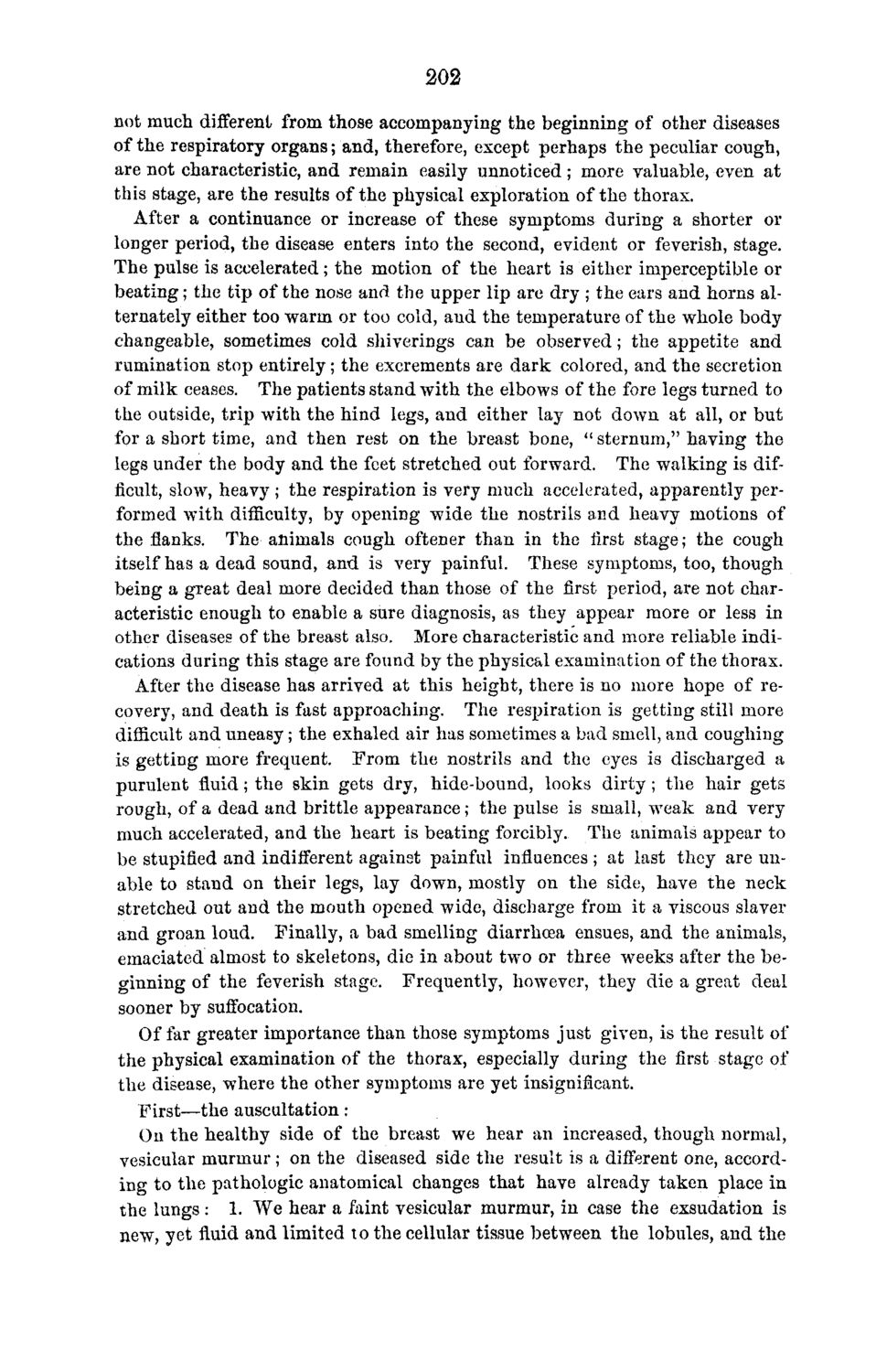| |
| |
Caption: Board of Trustees Minutes - 1870
This is a reduced-resolution page image for fast online browsing.

EXTRACTED TEXT FROM PAGE:
202 not much different from those accompanying the beginning of other diseases of the respiratory organs; and, therefore, except perhaps the peculiar cough, are not characteristic, and remain easily unnoticed; more valuable, even at this stage, are the results of the physical exploration of the thorax. After a continuance or increase of these symptoms during a shorter or longer period, the disease enters into the second, evident or feverish, stage. The pulse is accelerated; the motion of the heart is either imperceptible or beating; the tip of the nose and the upper lip are dry ; the ears and horns alternately either too warm or too cold, and the temperature of the whole body changeable, sometimes cold shiverings can be observed; the appetite and rumination stop entirely; the excrements are dark colored, and the secretion of milk ceases. The patients stand with the elbows of the fore legs turned to the outside, trip with the hind legs, and either lay not down at all, or but for a short time, and then rest on the breast bone, " sternum," having the legs under the body and the feet stretched out forward. The walking is difficult, slow, heavy ; the respiration is very much accelerated, apparently performed with difficulty, by opening wide the nostrils and heavy motions of the flanks. The animals cough oftener than in the first stage; the cough itself has a dead sound, and is very painful. These symptoms, too, though being a great deal more decided than those of the first period, are not characteristic enough to enable a sure diagnosis, as they appear more or less in other diseases of the breast also. More characteristic and more reliable indications during this stage are found by the physical examination of the thorax. After the disease has arrived at this height, there is no more hope of recovery, and death is fast approaching. The respiration is getting still more difficult and uneasy; the exhaled air has sometimes a bad smell, and coughing is getting more frequent. From the nostrils and the eyes is discharged a purulent fluid; the skin gets dry, hide-bound, looks dirty ; the hair gets rough, of a dead and brittle appearance; the pulse is small, weak and very much accelerated, and the heart is beating forcibly. The animals appear to be stupified and indifferent against painful influences ; at last they are unable to stand on their legs, lay down, mostly on the side, have the neck stretched out and the mouth opened wide, discharge from it a viscous slaver and groan loud. Finally, a bad smelling diarrhoea ensues, and the animals, emaciated almost to skeletons, die in about two or three weeks after the beginning of the feverish stage. Frequently, however, they die a great deal sooner by suffocation. Of far greater importance than those symptoms just given, is the result of the physical examination of the thorax, especially during the first stage of the disease, where the other symptoms are yet insignificant. First—the auscultation : On the healthy side of the breast we hear an increased, though normal, vesicular murmur; on the diseased side the result is a different one, according to the pathologic anatomical changes that have already taken place in the lungs : 1. We hear a faint vesicular murmur, in case the exsudation is new, yet fluid and limited to the cellular tissue between the lobules, and the
| |